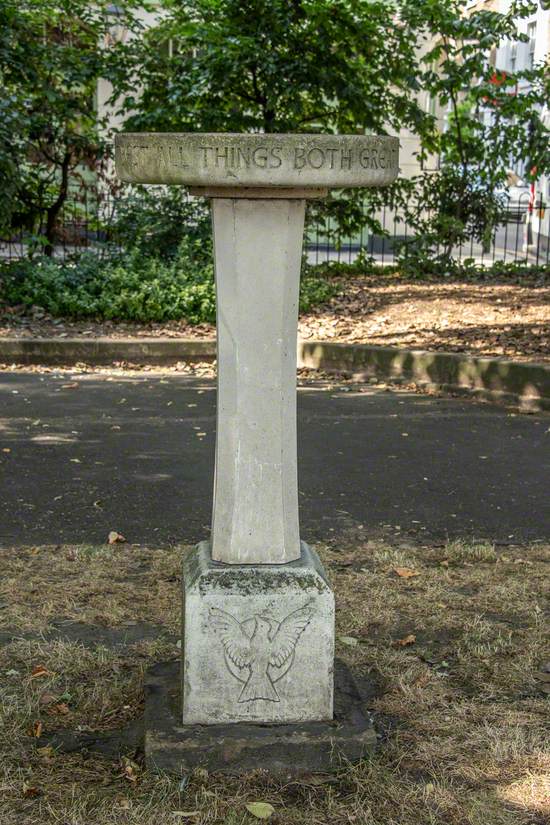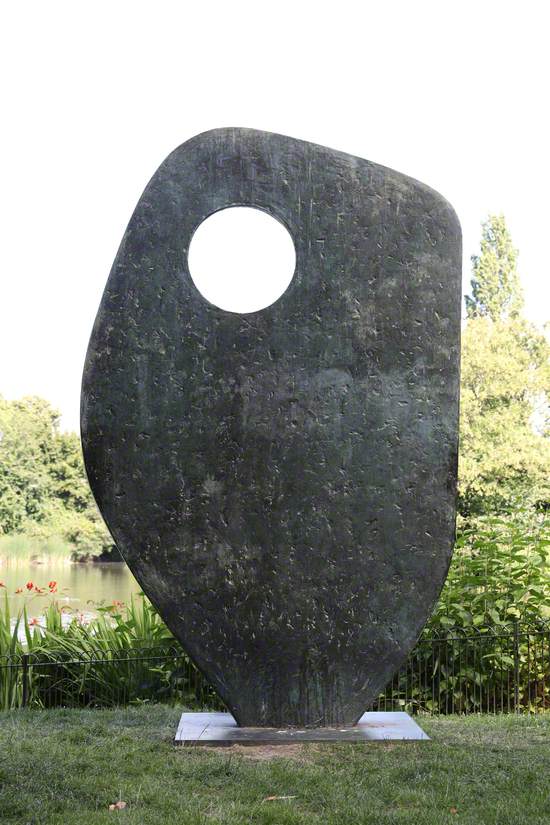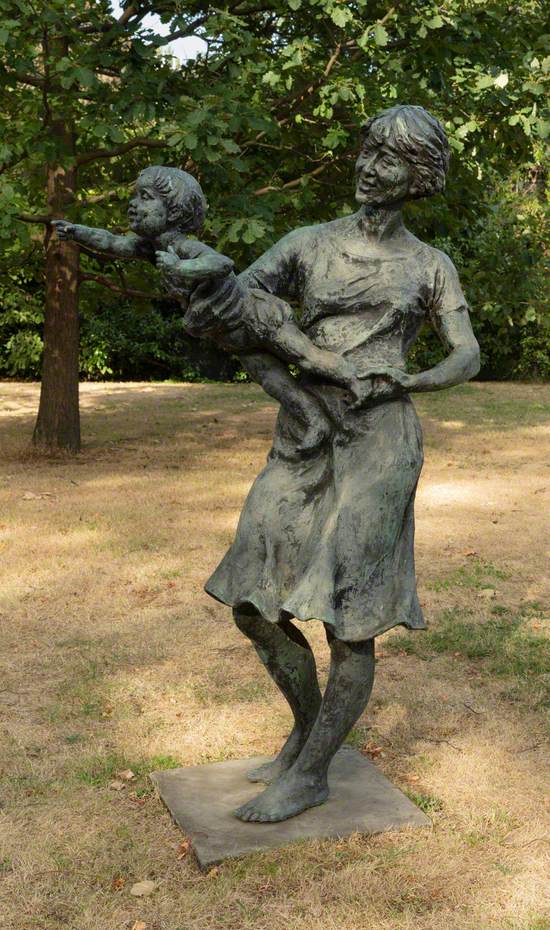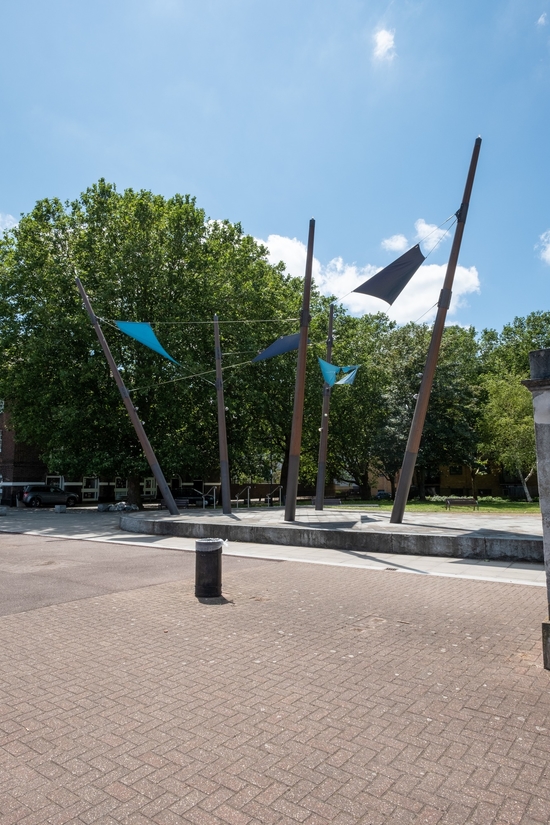The River Thames wends for approximately 40 miles through London, touching on 17 boroughs as it does so. Dozens of sculptures dot its banks, and many more lie just a few minutes’ away. To introduce you to just a few of these, we’ve selected one Thames-side work from (almost) every London borough that lies on the river’s banks. We maybe wouldn’t recommend trying to see all 15 sculptures listed here in a single, mammoth trek, but the next time you’re down by the riverside, why not see what the Thames has to offer?

© the copyright holder. Image credit: Jennette Russell / Art UK
Margaret Damer Dawson Memorial Bird Bath
1933
Charles James Pibworth (1878–1958)
Portland stone
H 138 x W 62 x D 62 cm
Margaret Damer Dawson Memorial Bird Bath
From Hammersmith & Fulham to Kensington & Chelsea, and a rather different sort of memorial sculpture. Rather than the figurative form of Laury Dizengremel’s statue of Capability Brown, the Margaret Damer Dawson Memorial Bird Bath is, well, a bird bath. It was erected in 1933 in honour of Dawson, a prominent anti-vivisectionist and philanthropist who co-founded the first British women's police service.

© The Henry Moore Foundation. All Rights Reserved, DACS 2025 / www.henry-moore.org. Image credit: Colleen Rowe Harvey / Art UK
Draped Seated Woman
Our next borough, Tower Hamlets, is home to a piece by another of our most celebrated British sculptors. This time it’s Henry Moore’s graceful looking but cumbersomely named Draped Seated Woman, rather more affectionately known as ‘Old Flo’. Moore apparently drew on his memories of people sheltering from the Blitz as part of his inspiration. She’s a well-travelled piece, having been originally purchased from Moore as a piece of public art for the now demolished Stifford housing estate, Stepney in 1962. In the late 1990s she was moved to the Yorkshire Sculpture Park for safekeeping when the estate was demolished, but returned to the East End in 2017.
Explore artists in this Curation
View all 20-
 Chiswick Community School, students
Chiswick Community School, students -
 The Klassnik Corporation
The Klassnik Corporation -
 Laury Dizengremel (b.1954)
Laury Dizengremel (b.1954) -
 Henry Moore (1898–1986)
Henry Moore (1898–1986) -
 Francis Bird (1667–1731)
Francis Bird (1667–1731) -
 Antony Gormley (b.1950)
Antony Gormley (b.1950) -
 Tube Workers (Structures) Ltd
Tube Workers (Structures) Ltd -
 unknown artist
unknown artist -
 Hamo Thornycroft (1850–1925)
Hamo Thornycroft (1850–1925) -
 Moore & Co.
Moore & Co. - View all 20












